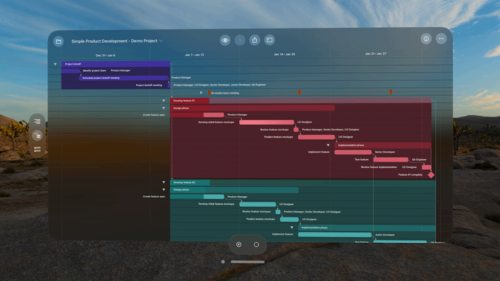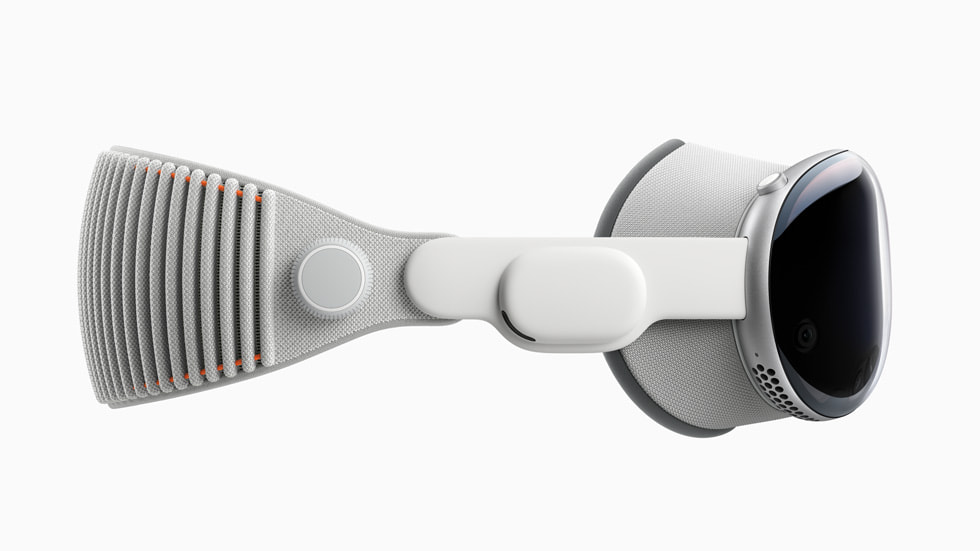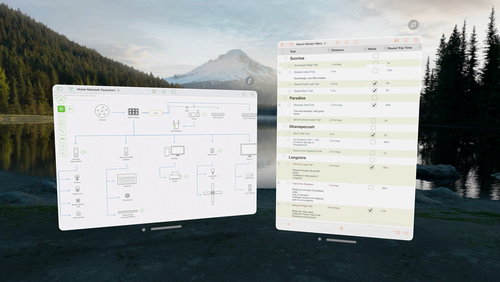
Ken Case‘s dad worked for many years at Boeing in industrial engineering for highly complex projects such as the Boeing 747 and Saturn V booster rocket. Case remembers his dad bringing home large Gantt charts — long rolls of paper with timelines and tasks — so that he could unfurl them across the living room floor and over the coffee table to annotate them manually.
These days, as co-founder and CEO of the Seattle-based Omni Group productivity software company, Case works with his team to help project managers do the equivalent on their screens, no pencil or eraser required.
With Apple Vision Pro, they’re bringing the experience into the future and back to the living room, or anywhere else people happen to be using their software.
“It’s time for our apps to escape the boundaries of these limited screens that we have in front of us,” Case said in an interview this week.
Omni Group released its OmniPlan 4 project management software for Apple Vision Pro this week, as a native app on Apple’s visionOS, to coincide with today’s launch of Apple’s new mixed reality headset. The device, which starts at $3,499, represents the tech giant’s latest attempt to define and popularize a new computing platform.

Apple announced Thursday that more than 600 apps have been developed natively for Apple Vision Pro at launch. Microsoft said this week that its productivity apps are among them. The device will also run more than 1 million compatible apps from the App Store.
For Omni Group, the launch continues a longstanding tradition of making the leap to new Apple platforms.
The 22-person company was founded in 1992 by Case, Tim Wood and Wil Shipley, who had gotten to know each other as University of Washington students. They originally focused on Steve Jobs’ NeXT platform, which positioned them to transition to Mac OS X and iOS as those platforms emerged after the late Apple co-founder’s return.
The company hasn’t made every platform transition with Apple. Apple TV and CarPlay are two examples that didn’t make as much sense for productivity.
But there was no question about Apple Vision Pro. While some of the most eye-catching applications so far are in entertainment and games, Case said he saw clear value for productivity software.
“You’re not limited to the size of a screen,” he said. “You get to put that window anywhere in space, make it as big as you want. You can have other windows of other content that are also placed nearby, in front and back, wherever. Getting rid of that constraint of the screen size — it’s what really attracted me to this platform.”
He described the software development process, transitioning to the Apple Vision Pro, as relatively seamless for Omni Group due to their existing SwiftUI codebase that works across multiple Apple platforms.

Much of the existing code could be reused, although adaptations were needed for the new spatial computing environment. In addition to adjusting for the fact that windows can be placed anywhere in the user’s environment, at any size, some of the necessary changes included:
- Clearly indicating which areas of the interface are interactive, because a key form of interaction is via eye tracking rather than touch. The system highlights interactive areas as the user looks at them.
- Designing for variable lighting conditions. Environment lighting can come from any direction rather than a fixed light/dark mode, and highlight/accent colors need to be visible against any background.
OmniPlan 4 has been redeveloped as a native app for Apple Vision Pro, but because of the cross-platform software compatibility, Omni Group apps such as OmniGraffle and OmniOutliner can also be run as compatible software on the Apple headset, albeit without the user interface upgrades of a native Vision Pro app.

Bluetooth keyboards can be paired directly with the Apple Vision Pro, and users can also work on their Macs inside the device using the Mac Virtual Display feature. The Vision Pro’s cameras let users see their hands on a physical keyboard in front of them when interacting with the real world. Voice input is also an option.
Case is a fan of virtual and mixed reality, so he has a sense for what the experience will be like using OmniPlan in Apple Vision Pro. However, the limited availability of the device to developers pre-launch means that he and the Omni Group team have been working in a simulation environment on their computers, not in the headset.
That means today will be the first time they experience OmniPlan in Vision Pro directly. Members of the Omni Group team will be at the Apple Store at University Village, near the company’s Seattle office, to pick up devices.
“I am really excited about this,” Case said, explaining that he sees this new platform as the beginning of something much larger for technology and the world.
If someone from the past were asked envision the ideal computing environment of the future in the abstract, he said, they probably wouldn’t think of it as just involving screens on multiple devices. Rather, content would be projected onto the world around you, without needing to carry around hardware at all.
One of Apple Vision Pro’s key contributions is to move toward that future. “It’s not the first step. Teams have been working on this for 50 years,” Case said. “But it is certainly the strongest step that we’ve seen towards the whole thing being there.”

